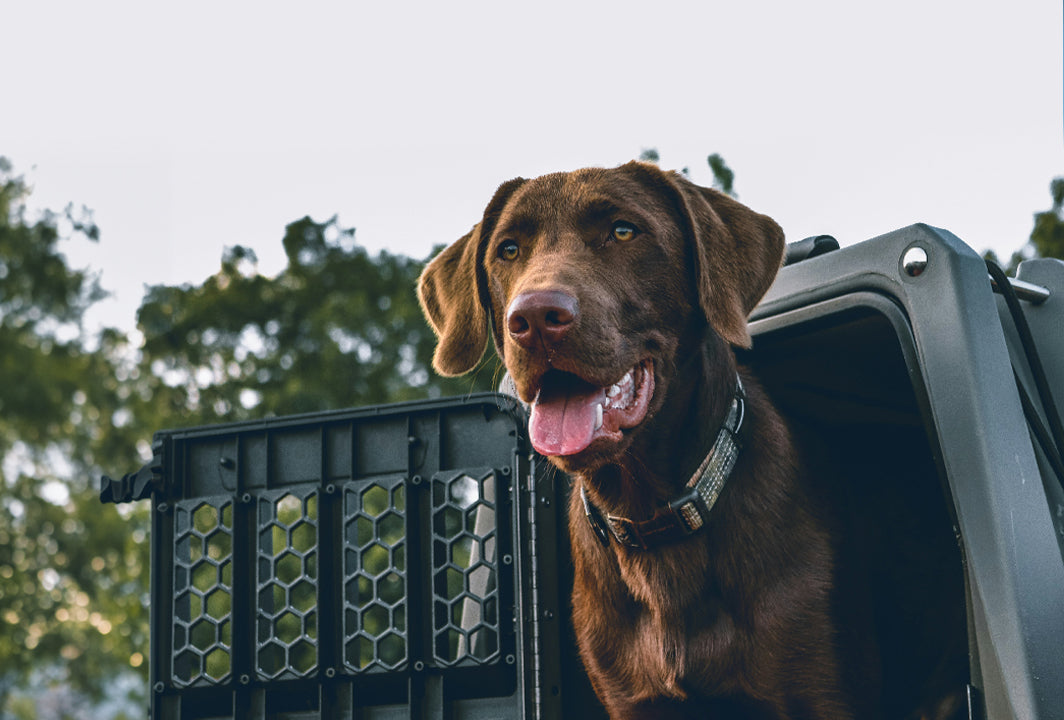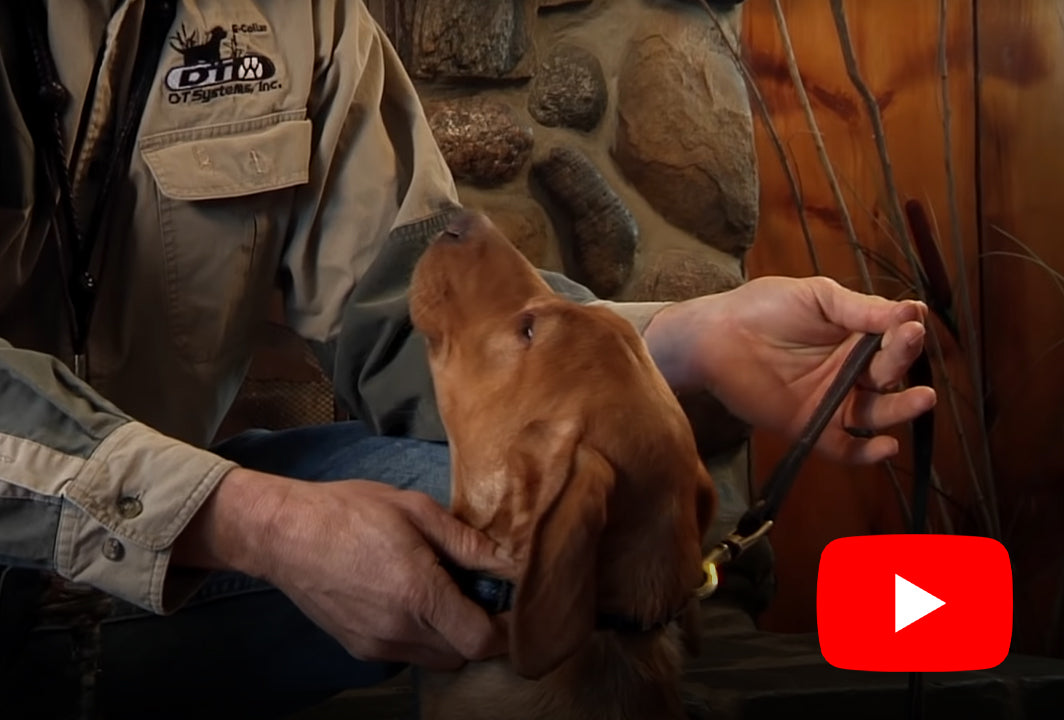When You Should Start Puppy Socializing and Crate Training
There are three important main elements that go into having an incredible dog and training experience!

Bringing a new puppy home is an exciting thing! Maybe you have finally gotten the hunting dog you have dreamed of and envisioned yourself hunting with for a long time. Now, you’re faced with the decision of when you should begin training him.
Within the first few weeks of adopting your little puppy, you're going to want to attack three of the major elements of dog training immediately!
The three main elements are socialization, obedience, and accentuating your dog's natural hunting instincts.
Puppy Socialization Training
You’re going to want to begin puppy socialization immediately! Your puppy is going to be missing his siblings, and his environment is changing radically. Providing a safe, warm, and loving atmosphere for him helps eliminate the stress he may be feeling.
It's very important that you establish that your family is the new pack for your dog. To do this, you’re going to spend a lot of time holding your dog, physically touching him, talking to him, saying his new name, and getting him used to your voice and his surroundings.
Positive and Negative Reinforcement Training
Even at eight weeks old, there are a couple of techniques that you can begin performing as soon as you bring your puppy home that lay important groundwork for future training and behavior purposes.
You’re going to start out by teaching your dog the basics of positive and negative reinforcement. Positive reinforcement is anything your dog likes, and negative reinforcement is anything your dog does not like that can be used to change his behavior.
This training begins with everyday things. For example, when you are holding your puppy, eventually he’s going to feel like he’s had enough and wants to be put down. However, just because your puppy starts wiggling doesn’t mean you give in!
Most people make the mistake of letting their new dog down as soon as he starts wiggling. This teaches the dog that he can get whatever he wants just by fighting for it. You need to teach your dog at a young age that you are the master, not him.
Negative Reinforcement
By teaching your dog that by cooperating or performing some sort of task for you, he’s going to get what he wants, it’s actually going to have the opposite effect on him. This is called “negative reinforcement.”
So, when your puppy begins to wiggle, you should institute a little bit of negative reinforcement by putting some light pressure on the dog with your arms and hands. Not enough to hurt him, but enough so he knows you’re in control and want him to stay. When the dog stops wiggling, simply take that pressure (the negative reinforcement) off of him.
Your dog will soon learn that by relaxing or doing what you want him to do, the negative reinforcement is going to come off!
Positive Reinforcement
When your dog does what you want him to do and relaxes, you're now going to give him positive reinforcement. In this case, positive reinforcement is simply letting him get down!
It’s important to build a positive, mutually beneficial relationship with your puppy as soon as you adopt him. Teaching him these simple yet effective reinforcement techniques will lay a strong foundation for future training.
Developing trust with your puppy will make the rest of your dog training so much easier!
Leash and Collar Training
Let’s go over a few more tips and techniques that you can use early on with your puppy to help with the dog training process. You can begin putting either a nylon or leather strap collar and leash on him as soon as he is eight weeks old!
An easy way to help your puppy get used to this is by putting these on him and just letting him drag them around the house when he walks. This helps him get used to the fact that he’s feeling a little pressure, and it's no big deal!
Once you get your puppy used to the leash and the strap collar, you can actually use it as a negative reinforcement tool.
Don’t dismiss starting your training right away because you’re worried your dog is too young. You'll be amazed at how many things an eight-week-old puppy can learn!
Crate Training
Part of the socialization process is getting your dog used to their crate. Introducing them to their crate early on is crucial, as it will be used in different applications and will be part of their life forever.
Like any new concept that you introduce to your dog, make sure that you introduce it in a very positive way!
Introducing Your Dog to Their Crate
To begin, you can actually just put your hand towards the crate while holding a dog treat. This will build a positive association with it and get your puppy excited!
Next, put a few treats at the entrance of his crate so he starts to understand the correlation. Then, keep putting the treats further and further back in the crate. Pretty soon, your dog will be entering the crate and exploring deeper into it.
By practicing putting your dog in the crate for short periods of time, you're going to create a positive experience for your dog. And pretty soon, your dog will actually look forward to getting into the crate!
Letting Your Dog Out of the Crate
When you open the door to a crate with an energetic puppy, most likely they're going to come barreling out. Maybe it seems cute at first; however, the last thing you want is for that to become a new bad habit of theirs!
To prevent this bad habit, you’re going to teach your dog to stay in the crate until they're released. Keep in mind that when they grow up to be a big dog and come barreling out of their crate, it can be dangerous for whoever's opening the door.
It could also put your dog in a dangerous situation if they ran across the street when they were getting out of the car. You can use the door as negative reinforcement by continually bouncing it until your dog finally gives up and backs away.
Once you can get the dog to stay while the door is all the way open, go ahead and release the dog by calling their name!
It should only take your puppy a couple of days to get used to going into the crate. Once he’s used to it, you can start using the crate for other purposes right away. In fact, using a crate is a great way to help housebreak your dog.
Remember, it’s important to start all of these training techniques at a young age so your dog can get used to them early on! This will make him a better-behaved dog and help you understand how to train him with negative and positive reinforcement.
You can shop here for the DT Systems' Nylon Collar Strap that is fully adjustable, enabling it to grow with your dog!




